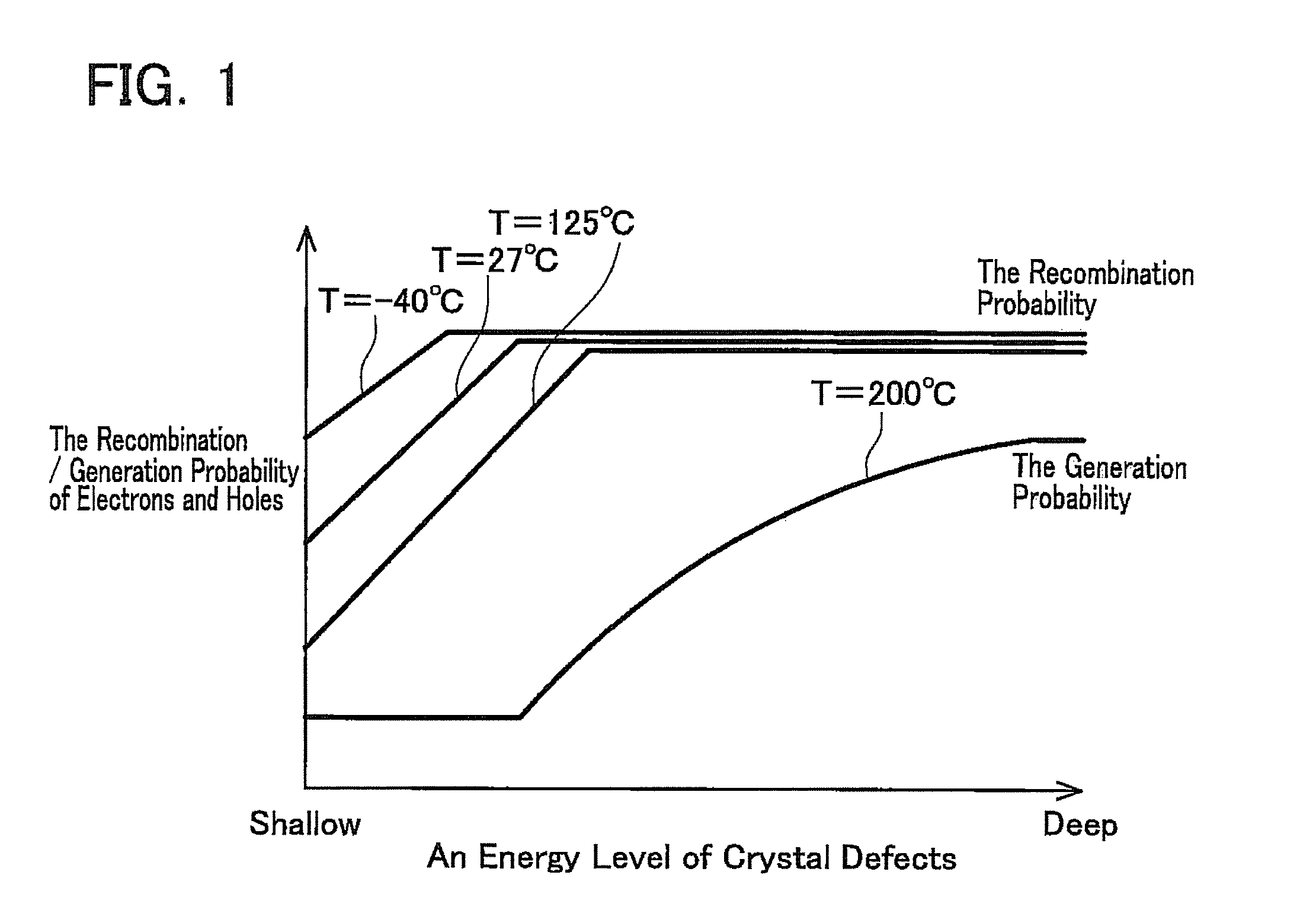Reverse recovery using oxygen-vacancy defects
a technology of oxygen-vacancy defects and reverse recovery, which is applied in the field of free wheel diodes, can solve the problems of easy variation of the recombination degree of electrons and holes, increase of leak current under reverse biased states, etc., and achieve the effect of lowering the reverse recovery charge (qrr) and softening the recovery curren
- Summary
- Abstract
- Description
- Claims
- Application Information
AI Technical Summary
Benefits of technology
Problems solved by technology
Method used
Image
Examples
Embodiment Construction
[0027]FIG. 2 shows a schematic cross sectional view of a diode 10. Note that FIG. 2 only depicts an element region and does not depict a terminal region disposed around the element region. The diode 10 comprises a semiconductor substrate 20 of monocrystal silicon, a cathode electrode 30 formed on a first main surface 20a of the semiconductor substrate 20 and an anode electrode 70 formed on a second main surface 20b of the semiconductor substrate 20. The diode 10 belongs to a so-called vertical type PIN diode.
[0028]As shown in FIG. 2, the semiconductor substrate 20 comprises a cathode region 42, an electrical field inhibition region 44 formed on the cathode region 42, a voltage maintaining region 50 formed on the electrical field inhibition region 44 and an anode region 60 formed on the voltage maintaining region 50. The cathode region 42 and the electrical field inhibition region 44 include a higher density of n-type impurities than the voltage maintaining region 50. The cathode reg...
PUM
 Login to View More
Login to View More Abstract
Description
Claims
Application Information
 Login to View More
Login to View More - R&D
- Intellectual Property
- Life Sciences
- Materials
- Tech Scout
- Unparalleled Data Quality
- Higher Quality Content
- 60% Fewer Hallucinations
Browse by: Latest US Patents, China's latest patents, Technical Efficacy Thesaurus, Application Domain, Technology Topic, Popular Technical Reports.
© 2025 PatSnap. All rights reserved.Legal|Privacy policy|Modern Slavery Act Transparency Statement|Sitemap|About US| Contact US: help@patsnap.com



